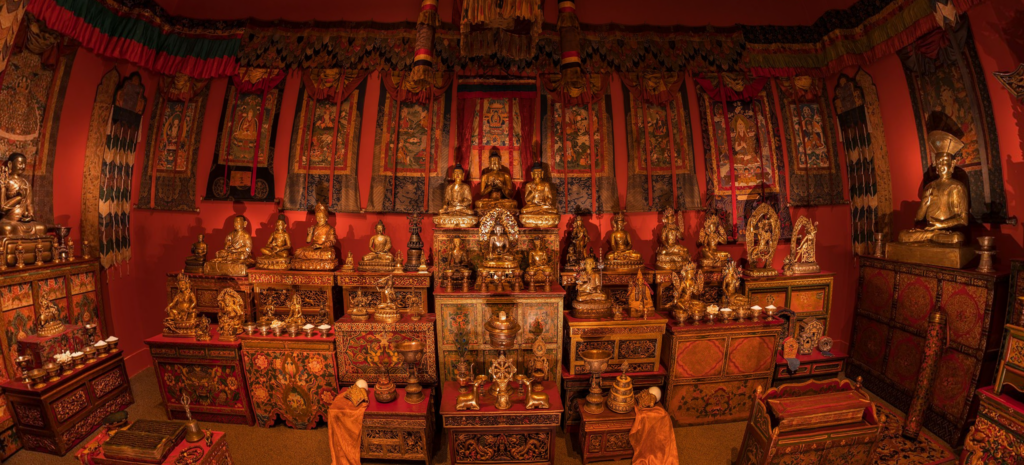The first online exhibit that I looked into was the Tibetan Buddhist Shrine exhibit at the Smithsonian Nation Museum of Asian Art. I believe that this exhibit is one that is online and also in person. The webpage about the Shrine Room and how it came to be is very in depth and has a lot of details. It has a home page, a visual glossary, information about Tibetan Shrines, and finally a interactive virtual shrine room. In the shrine room, you can click on the statues, and more information will become available about the statue, who it is, what their purpose is, and what it is made out of. They also have a credits and acknowledgments section, which list all the people who were in collaborative effort to make the exhibit possible. Through that, you can find out that many of the statues were donated by a Dr. Alice S. Kandell, who was gifted many Tibetan statues, and then gifted them to the museum. There was also a collaborative effort with many photographers who shared their photographs of shrines, temples, and landscapes of Tibet. This exhibit was very open about where they got many of their items, and gave great detail about the items that were in it.
The second online exhibit that I looked into was The National Museum of Wildlife Art collection. This museum features many artists from a variety of countries around the world. While this museum allows you to view many of their collections, there isn’t a lot that suggests it to be a very collaborative effort. There isn’t a lot of information about how the museum got the artworks, and they only give the bare minimum for descriptions. Of the few paintings that I looked at, the most I could get out of it was a line that said “a gift to the NMWA”, but not who gifted it. Overall, it just doesn’t have the amount of information that you would want from an art exhibition, especially when compared to the detailed description that the Smithsonian gave for it’s Tibetan Buddhist Shrine exhibit.
Question: Did you find any online exhibits that didn’t give a lot of information regarding it’s exhibit?

HI Arianna,
I enjoyed reading your post especially the background of each exhibit. To answer your question, I haven’t found an exhibit that didn’t share that much information. I probably would have to say that the Google Arts and Culture that teams up with museums and heritage centers have the least information for a virtual exhibits.
The exhibits I looked through typically included a number of external links to get additional information, so even though they didn’t go into that great of detail, I still felt like the information was out their if I wanted to do a deep dive on the subject.
Yes. I think there’s an overabundance of poorly constructed virtual museum websites that lack informative pages. Maybe it’s because there’s so much work involved in digitizing collections. My biggest gripe, is constantly encountering museum databases that lead to nowhere. It’s bad enough information doesn’t just pop-up on a page but when a museum says they have a searchable database and that database is under construction for all of eternity or the links are dysfunctional, it is agonizing. Especially, when you’re online conducting research versus a casual internet scroll.
Yes, I ran into that quite a bit, The Gregory Gift at the Frick Collection was very basic in it’s information and links. Art museums seem to be the least informative in that sense.